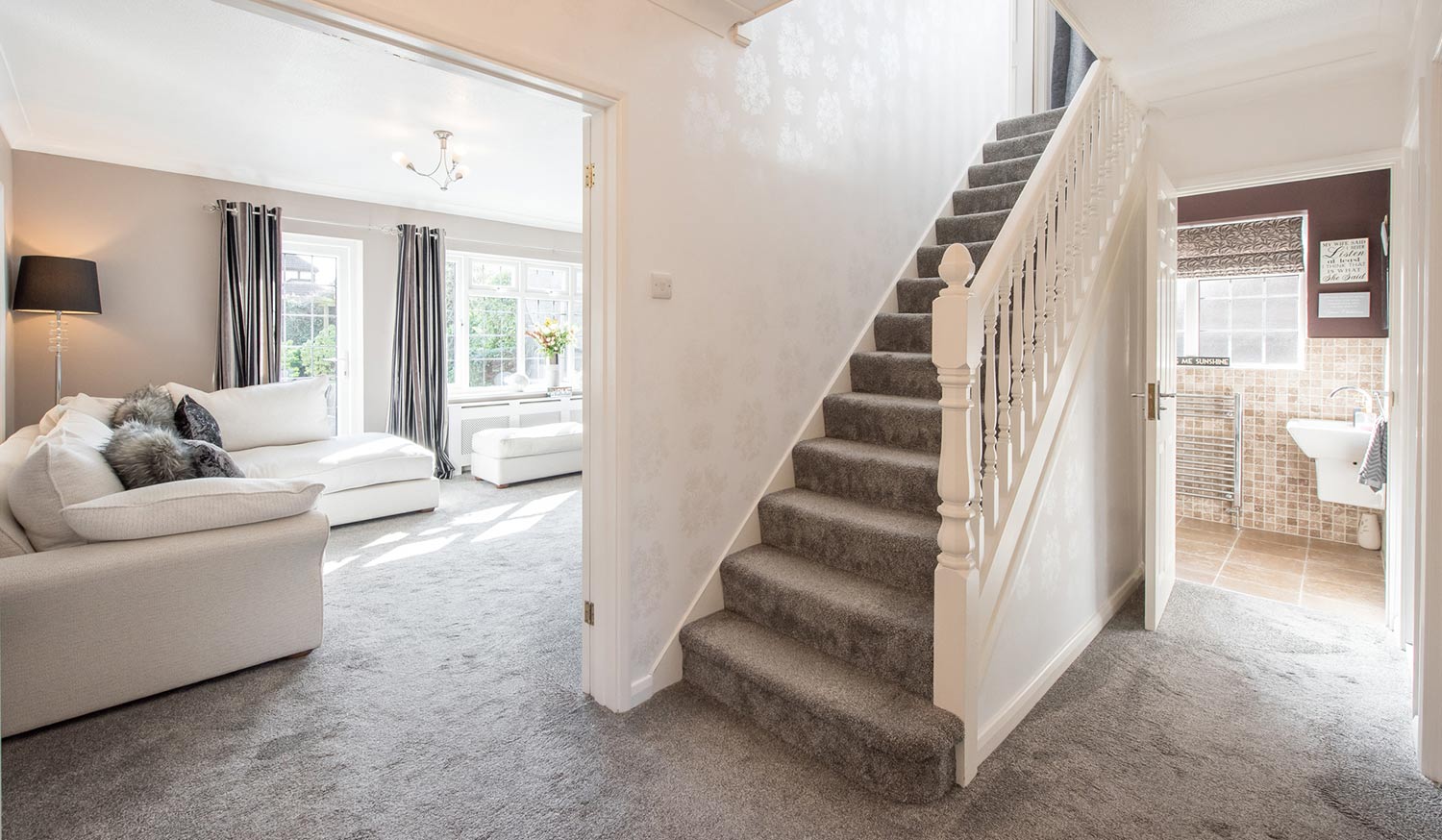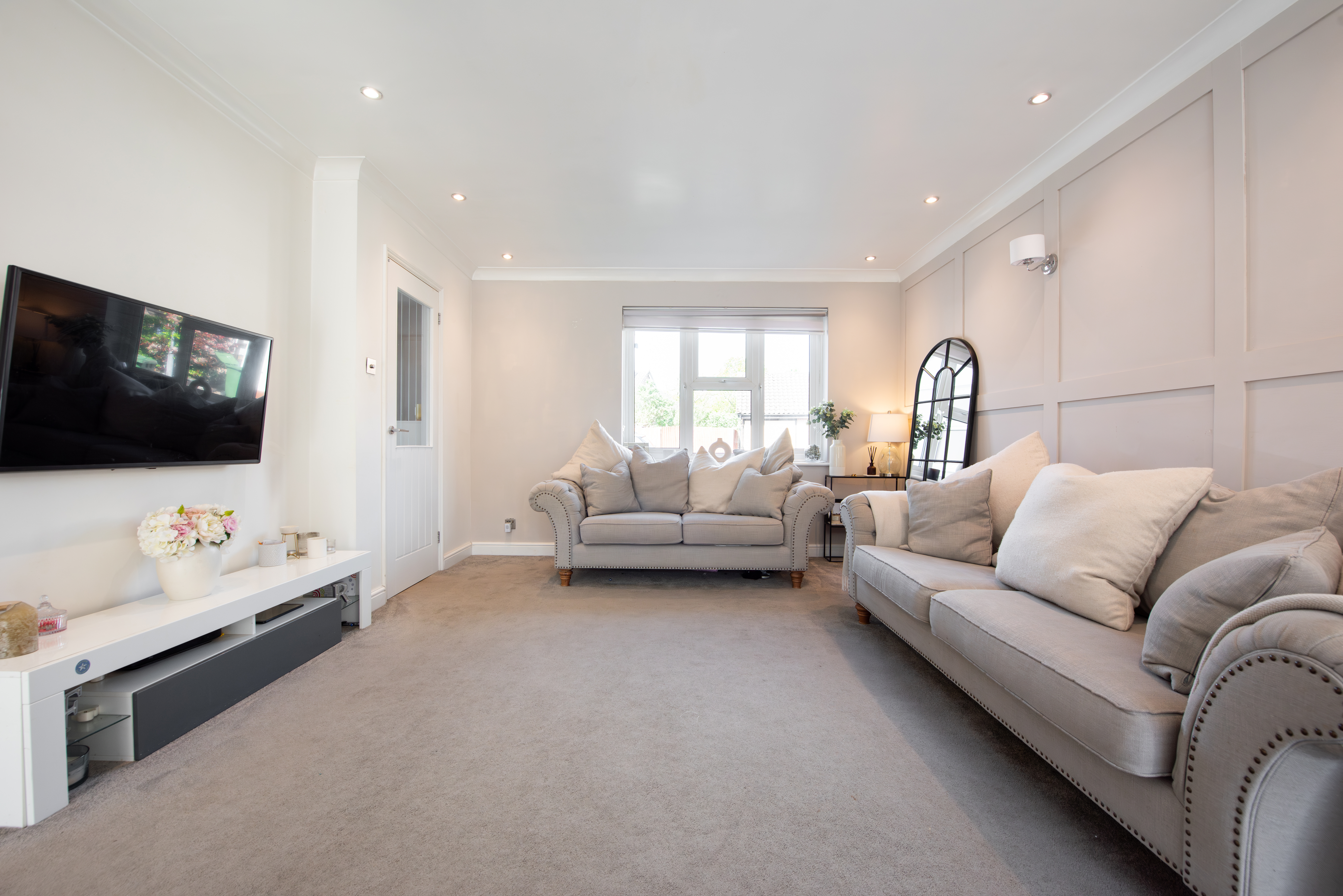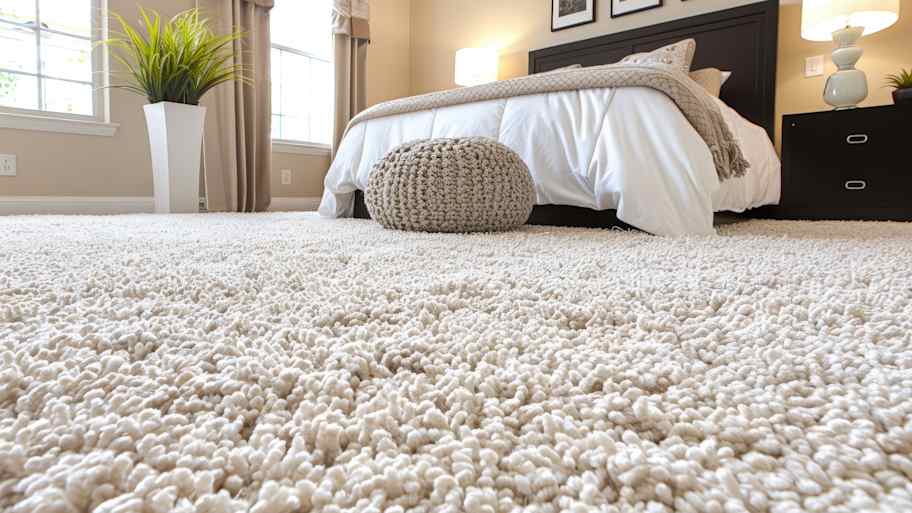
Carpet padding makes your carpet feel extra comfortable and protects your floors from damage, but how much does carpet padding cost? Let’s look at the numbers.
The right carpet can make high-traffic areas look pristine even if they see a ton of feet


High-traffic areas of a home, like staircases and hallways, have to go through a lot. But the right carpet can keep them looking as good as new, no matter how much action they see. A handful of factors—like the materials a carpet is made with and how it’s made—will help you determine if a rug is up to snuff. With the tips in this guide, you’ll know what to expect from your new carpet installation.
Carpet comes in many different styles, which are also known as piles in the carpet world. Some are long and flowy, others short and stubby, and not all are ideal for high-traffic settings.
| Carpet Style | Description |
|---|---|
| Low-pile | Short, stain-resistant, less likely to trap dust and dirt |
| Twist-pile | Plush, luxurious, long-lasting |
| Level loop pile | Stain-resistant, uniform look |
| Textured | Eye-catching, durable, shows fewer footprints |
| Berber | Dense, doesn’t shed easily, great for hallways |
This type of carpet is always less than 0.25 inches in height, making it easy to maintain, resistant to stains, and especially suitable for busy areas in your home. After all, shorter strands of yarn mean fewer spots for trapping dust and debris. They have a smooth, flat feel, are available in many different materials, colors, and patterns, and are less prone to wrinkling than other carpet styles.
This style twists longer strands of yarn to create a plush, protective carpeting. Frieze is another type of carpet under this umbrella that relies on especially long yarn for an extra luxurious feel. It’s often chosen for commercial use because of just how long-lasting it can be.
This style applies glue to both the top and bottom of the carpet to ensure that each strand of yarn is exactly the same height. The extra layer of security from the glue also helps it resist stains, though it isn’t as comfortable as some of your other options.
This type of carpet uses strands of varying length to create a surface that’s both eye-catching and durable. It shows fewer footprints than other varieties, making it perfect for spots that see a lot of foot traffic.
This densely woven carpet style is great for your staircases and hallways because it won’t shed or tuft easily and it will add a little something special to these spaces. The only downside to this option is that it’s more expensive than the rest. On average you’ll pay $5 per foot to have it installed.
High-traffic areas require flooring that can withstand frequent use, children’s shoes, scurrying paws, and dirt or stains. Installing an easy-to-clean floor that will last on stairs, hallways, or in the kitchen may be worth the long-term investment.

Each of the best carpet styles for high-traffic areas can be made with any kind of material. These are your best options for those busy spots.
| Carpet Fiber | Description |
|---|---|
| Nylon | Resistant to mold and mildew, durable, doesn’t trap odors |
| Polyester | Affordable, moisture-resistant, stain-resistant |
| Olefin | Moisture-resistant, easy to maintain, soft |
| Sisal | Very strong, long-lasting, unique look |
This material is a favorite for high-traffic areas for a number of reasons. It’s resistant to mildew and mold, so it’ll keep unwanted odors at bay—you know, in case one of your pets decides to drag in something unsavory. It’s also strong enough to endure the never-ending steps it’ll see in the most congested areas of your home. Its one downside is that it can create static, but it can be treated with anti-static before or after installation.
This material is an affordable option that’s moisture- and stain-resistant. But whether or not it will pass the test in your high traffic zones depends on how it’s put together. You’ll get the most use out of polyester if it’s made with a lower pile or high twist count.
Olefin is another inexpensive option that’s resistant to moisture as well as easy to maintain. It’s also softer than nylon, but less durable, too. Luckily, it can be pre-treated to resist fading. Just be sure to keep it away from anything hot, as it’s highly susceptible to burning when near high temperatures.
Made from a cactus plant, sisal is stronger and longer-lasting than other natural fibers. Its rough texture is both sturdy and stylish, and can be used both in and outside. But it’s also not the most comfortable option.
When picking the right carpet for busy areas, you’ll want to look at three major factors.
In general, heavier, denser carpets will do a better job of keeping dirt, stains, and tears to a minimum. Most carpet will weigh between 25 and 50 ounces per square yard, so try to choose an option that’s on the higher end of this range to ensure you have what you need.
Save the whites, grays, and bright colors for spots in your home where you can actually enjoy them and stick with darker tones in high-traffic areas.
Lighter tones will make it impossible to ignore even the smallest of stains, which will inevitably happen in these busy places. Opting for a darker color will also add a nice contrast to the parts of your home with lighter carpet and save you from having to choose between dry and steam cleaning your carpet as often. You may even find that you actually prefer the balance the two tones bring.
If you have pets or kids running up and down the stairs every five minutes, it might be worth the extra mile to get your new carpet treated—at least in the most chaotic spots in your home. Treatments are available for stain, moisture, and dander resistance, though usually at an extra cost. On the other hand, they will make pricey carpet cleanings less necessary, so you may end up saving in the long run.
You may be wondering if you should install carpet or hardwood flooring in your home's busiest rooms. Both options have their advantages and disadvantages to consider before making a decision. Overall, consider which material best fits your budget, needs, and lifestyle.
When it comes to ease of cleaning, hardwood flooring is the winner. All you need to do is dust mop the floor, whereas carpeting requires vacuuming and professional cleaning at least once a year.
If you have pets, messes on the carpet can be challenging to spot-clean. Additionally, pet hair and dander can get trapped in the fibers. You’ll have to be more on top of regularly cleaning this flooring.
Carpeting can make your home comfortable for movie nights or building a blanket fort in the living room. It feels soft and reduces noise, so you won’t hear people walking around as much.
You’ll spend about $1,500 to $5,500 on the cost to install carpet in a 500-square-foot room, while hardwood flooring costs $3,000 to $6,000 in a room of the same size.
If you decide carpet is right for you, call a carpet installer in your area who can help you choose the best material for your space.
From average costs to expert advice, get all the answers you need to get your job done.

Carpet padding makes your carpet feel extra comfortable and protects your floors from damage, but how much does carpet padding cost? Let’s look at the numbers.

The cost to carpet stairs depends on the number of stairs, material choice, and staircase type. Read on to calculate your project expenses

The average range to remove carpet costs $120 to $720. Contractors base carpet removal costs on square footage, home location, and installation type.

Rugs and carpets play different but important roles as flooring options in your home. Here’s what to think about when comparing these two popular options.

Learn how to fix ripped carpet and understand when to call a pro to repair the damage before it worsens and results in costly replacement.

Twist is a soft, durable, and versatile carpet, but it does have its drawbacks. Consider these twist carpet pros and cons for your next flooring project.